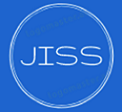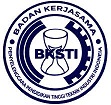Integration of SERVQUAL and Six Sigma for enhancing academic service quality in departments and laboratories: A case study
Abstract
Keywords
Full Text:
PDFReferences
I. Fatima, A. Humayun, U. Iqbal, and M. Shafiq, “Dimensions of service quality in healthcare: A systematic review of literature,” Int. J. Qual. Health Care, vol. 31, no. 1, pp. 11–29, Feb. 2019, doi: 10.1093/intqhc/mzy125.
A. S. Otto, D. M. Szymanski, and R. Varadarajan, “Customer satisfaction and firm performance: Insights from over a quarter century of empirical research,” J. Acad. Mark. Sci., vol. 48, no. 3, pp. 543–564, May 2020, doi: 10.1007/s11747-019-00657-7.
T. Fatima, S. A. Malik, and A. Shabbir, “Hospital healthcare service quality, patient satisfaction and loyalty: An investigation in context of private healthcare systems,” Int. J. Qual. Rel. Manag., vol. 35, no. 6, pp. 1195–1214, Jun. 2018, doi: 10.1108/IJQRM-02-2017-0031.
E. Widawati, “Analysis of student satisfaction with academic services and administrative services,” J. Mitra Manaj., vol. 4, no. 10, pp. 1500–1513, Oct. 2020, doi: 10.52160/ejmm.v4i10.478.
F. Astuti et al., “Improving the quality of jar products using the seven tools method (Case study: Mr. Ojid’s home industry),” Barometer, vol. 6, no. 1, pp. 307–312, 2021, doi: 10.24961/barometer.v6i1.1234.
A. Parasuraman, V. A. Zeithaml, and L. L. Berry, “SERVQUAL: A multiple-item scale for measuring consumer perceptions of service quality,” J. Retail., vol. 64, no. 1, pp. 12–40, Spring 1988.
R. Astuti, “Analysis of academic services using service quality and Six Sigma methods,” J. Educ. Cult., vol. 1, no. 1, pp. 43–50, May 2021.
B. Kurdi, M. Alshurideh, and A. Alnaser, “The impact of employee satisfaction on customer satisfaction: Theoretical and empirical underpinning,” Manag. Sci. Lett., vol. 10, no. 15, pp. 3561–3570, 2020, doi: 10.5267/j.msl.2020.6.038.
S. Ahmed, N. H. Abd Manaf, and R. Islam, “Effects of Six Sigma initiatives in Malaysian private hospitals,” Int. J. Lean Six Sigma, vol. 10, no. 1, pp. 44–57, 2019, doi: 10.1108/IJLSS-08-2017-0099.
S. Syaifullah, I. G. P. S. Wijaya, and A. Y. Husodo, “Academic administration service satisfaction information system based on science (Importance Performance Analysis) case study of the Faculty of Engineering, University of Mataram,” J. Comput. Sci. Informat. Eng. (J-Cosine), vol. 2, no. 1, pp. 37–43, Jun. 2018, doi: 10.29303/jcosine.v2i1.50.
M. A. Adha, A. Supriyanto, and A. Timan, “Strategy for improving the quality of madrasah graduates using fishbone diagrams,” J. Keilmuan Manaj. Pendidik., vol. 5, no. 01, pp. 11–12, 2019, doi: 10.32678/tarbawi.v5i01.1794.
I. N. Novadi and N. A. Mahbubah, “Evaluation of customer service quality based on Servqual–Six Sigma integration at Kuma Coffee and Eatery, Gresik Regency,” J. Sains Teknol., vol. 21, no. 2, pp. 302–317, 2021, doi: 10.36275/stsp.v21i2.423.
L. R. Noer, “Analysis of improving the quality of service for ITS Surabaya technology management master students using the Servqual method and importance performance analysis (IPA),” J. Res. Technol., vol. 2, no. 1, pp. 35–43, 2016, doi: 10.55732/jrt.v2i1.802.
A. Degoes, I. Bachtiar, and A. N. Rukmana, “Proposal for improving the quality of goods delivery services using the Servqual method at CV. KMD,” in Proc. Tek. Ind., 2021, pp. 224–230, doi: 10.29313/ti.v0i0.29285.
C. Jienardy, “Gap analysis of consumer perception and expectations of service quality, price, and product quality at Esus,” J. Performa: J. Manaj. Start-up Bisnis, vol. 1, no. 6, pp. 703–710, 2017, doi: 10.37715/jp.v1i6.398.
S. Moha and S. Loindong, “Analysis of service quality and facilities on customer satisfaction at the Yuta Hotel in Manado City,” J. EMBA: J. Riset Ekon., Manaj., Bisnis Akunt., vol. 4, no. 1, pp. 575–584, 2016, doi: 10.35794/emba.4.1.2016.11715.
E. Wahyuningsih, S. A. Azizah, M. I. Firdaus, and S. R. Siregar, “The analysis of delivery service quality using Six Sigma and Servqual methods in improving customer satisfaction,” in Proc. Glob. Res. Sustain. Transp. Logist., 2021, pp. 1–10.
T. Pyzdek and P. A. Keller, The Six Sigma Handbook: A Complete Guide for Green Belts, Black Belts, and Managers at All Levels, 3rd ed. New York, NY, USA: McGraw-Hill, 2010.
R. Nuresa, E. M. A. Khosi’in, and A. R. Febriyani, “Implementation of Six Sigma principles in building Islamic education quality management,” Evaluasi: J. Islam. Educ. Manag., vol. 6, no. 2, pp. 1–15, 2022, doi: 10.32478/evaluasi.v6i2.1052.
D. S. Soediantono, “Literature review of Lean Six Sigma (LSS) implementation and recommendations for implementation in the defense industries,” J. Ind. Eng. Manag. Res., vol. 3, no. 2, pp. 1–15, 2022, ISSN: 2722-8878.
M. Ulfah, F. Arina, and L. R. Hafsha, “Application of the Green Lean Six Sigma and factorial experiments approach to improve the quality of the bottled drinking water process,” J. Teknol. Ind. Pertan., vol. 34, no. 3, pp. 229–240, Dec. 2023, doi: 10.24961/j.tek.ind.pert.2024.34.3.229.
S. Slameto, “The application of fishbone diagram analysis to improve school quality,” Dinamika Ilmu, vol. 16, no. 1, pp. 59–74, 2016.
N. Martono, Metode Penelitian Kuantitatif. Jakarta, Indonesia: Raja Grafindo Persada, 2010.
A.U. Fanany, S. Suhartini, and G.H.M. Basuki, “Analysis of service quality on community satisfaction with Service Quality method and Importance Performance Analysis method at Berbek Village Office, Sidoarjo Regency,” in Proc. Nat. Seminar Sustain. Ind. Technol. III (SENASTITAN III), 2023, pp. 1–10.
P. A. Ranitaswari, S. Mulyani, and C. A. B. Sadyasmara, “Analysis of consumer satisfaction on coffee product quality and service quality using Importance Performance Analysis method (Case study at Geo Coffee),” J. Rekayasa Manaj. Agroind., vol. 6, no. 2, pp. 147–156, 2018, doi: 10.24843/JRMA.2018.v06.i02.p06.
I. Alwi, “Empirical criteria in determining sample size in statistical hypothesis testing and item analysis,” Formatif: J. Ilmiah Pendidik. MIPA, vol. 2, no. 2, pp. 140–148, 2012, doi: 10.30998/formatif.v2i2.95.
Karwanto et al., Adaptation of New Habits of Indonesian Society in the Era of the COVID-19 Pandemic: A Review of Various Disciplines, 1st ed. Indonesia: Akademia Pustaka, 2020.
J. Weimar, “Enhancing the passenger service quality at Frankfurt airport,” Manag. Excellence Programme, Frankfurt, Germany, 2011.
C.-C. Chou, L.-J. Jen, S.-C. Fang, J.-F. Ming, and T.-L. Chen, “An evaluation of airline service quality using the fuzzy weighted SERVQUAL method,” Appl. Soft Comput., vol. 11, no. 2, pp. 2117–2128, Mar. 2011, doi: 10.1016/j.asoc.2010.07.010.
T. M. Al Muhareb and J. Graham-Jones, “Using Lean Six-Sigma in the improvement of service quality at aviation industry: Case study at the departure area in KKIA,” Int. J. Soc., Manag., Econ. Bus. Eng., vol. 8, no. 1, pp. 150–156, 2014.
Sahyar, “Analysis of service quality of higher education study programs using Servqual and Six Sigma methods,” Pekbis J., vol. 4, no. 3, pp. 141–151, Nov. 2012.
S. Darwati, C. Sumantri, and A. T. Pratiwanggana, “Production performance between F1 commercial meat type × Kampung chicken and Kampung chicken × commercial meat type at 0-12 weeks,” J. Ilmu Prod. Teknol. Hasil Peternak., vol. 3, no. 2, pp. 72–78, Jun. 2015.
DOI: http://dx.doi.org/10.62870/jiss.v11i1.29226
Refbacks
- There are currently no refbacks.
 is supported by
is supported by








